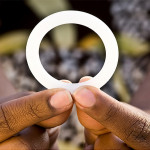A study examining the effects of a household-based program offering HIV testing, linkage to medical care and immediate treatment for the virus has shown promise as a means of getting sub-Saharan African nations closer to the World Health Organization’s (WHO) targets for treatment and diagnosis, aidsmap reports. Researchers in the ongoing PopART (or HPTN 071) study examined the effects of such a home-based program in Zambia and Kwazulu Natal, South Africa.
WHO has set an ambitious goal for nations to get, by 2020, 90 percent of their HIV population diagnosed, 90 percent of that group on treatment, and 90 percent of those on treatment virally suppressed. (In other words, 73 percent of all those living with HIV would have a fully suppressed viral load.)
Interim findings from the first round of the study, a pilot program in seven communities in which participants were recruited between November 2013 and mid-2015, were presented at the 2016 Conference on Retroviruses and Opportunistic Infections (CROI) in Boston.
The community-randomized trial is examining the effects of three methods: following the standards for HIV treatment according to national guidelines; an initiative that includes HIV prevention efforts and otherwise follows the national guidelines for HIV treatment; and an initiative that includes the same HIV prevention package and also offers treatment to individuals regardless of their CD4 levels.
In this first round of the study, the home-based testing program diagnosed 12,840 adults in Zambia and 3,300 adults in South Africa. About half of these individuals already knew they were HIV positive and were on treatment for the virus. After those who were not on treatment were referred to medical care, 58 percent of those in South Africa had begun taking antiretrovirals (ARVs) within 12 months, as had 53 percent of those in Zambia.
A combination effort that followed national treatment guidelines and made efforts to diagnose people with HIV, link them to care, and then immediately offer them ARVs, meant that 71 percent of the men and 72 percent of the women with HIV in Zambia, along with 58 percent of the men and 69 percent of the women with HIV in South Africa, were on treatment. The study’s interventions resulted in similar improvements in the proportion of those treated, cutting down by 43 percent the portion of the population that was diagnosed with HIV but not treated.
To read the aidsmap article, click here.
To read the PopART conference abstract, click here.
To read the HPTN 071 conference abstract, click here.







Comments
Comments